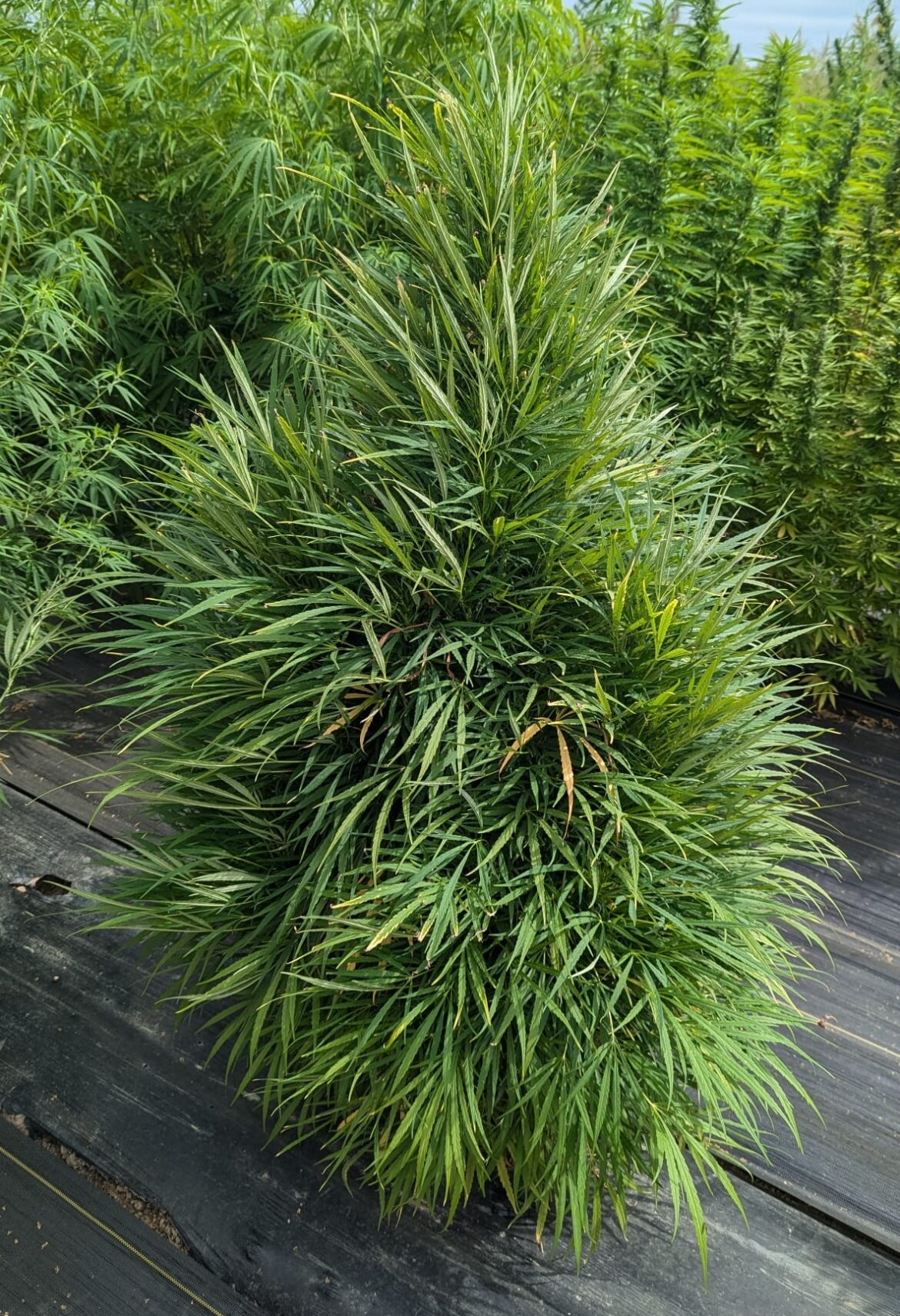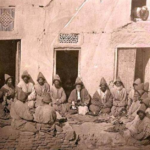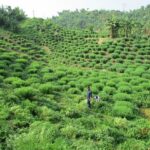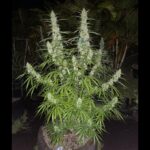Here’s that highly unusual semidwarf Nepali ganja landrace at 40° N in late August (foreground plant only).
This is not just one freak individual. All plants in this landrace show this unusual compact, leafy morphology – rather like bamboo or a tea bush.
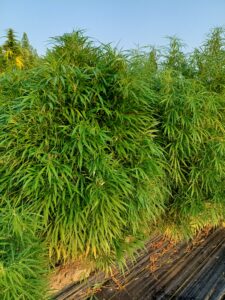
Individuals from this semidwarf Nepali ganja domesticate – foreground only
This is a Nepali domesticate used for illicit ganja production in the Terai lowland and subtropical highland regions of Nepal, as well as in areas of Northeast India such as Tripura. Its morphology makes it a great stealth cannabis strain.
For folks who think this architecture is ‘wild’, in the literal sense: An alternative term for ‘ganja landrace’ is ‘traditional sinsemilla domesticate’. Ganja landraces are tropical domesticates and the only traditional cannabis strains that have a history of selection for use as sinsemilla. Click this link to check out an actual wild-type Himalayan cannabis plant.
A literal translation of the term landrace is ‘country breed’. Utilized for illicit sinsemilla production, this Nepali landrace shows consistent morphology; large and fast-germinating seeds; large leaf area; and high levels of aromatic resins and THC, likely at consistent +10% THC. Many Nepalis don’t like to smoke this type of Terai ganja because they regard it as too ‘heating’ and potent. All these characteristics point emphatically at its domestication.
An irony of aficionados on our Instagram yesterday imagining these very high levels of leaf to be a ‘feral’ or ‘wild’ phenotype is this: Leaves photosynthesise. Do the vast amounts of woody stem in the ultra-branchy, so-called ‘elite’ hybrids grown in the west? Nope… What all those stems in current modern hybrids do is draw in and waste huge amounts of energy that could otherwise be deployed by the plant toward producing buds.
As ever, there’s often a lot of sense in the way Asian farmers work. Forcing daft ultra-low-density planting practices with wide-spaced plants onto hash farmers in Morocco, or Pakistan, or Lebanon – when all these farmers know that close planting will get them vastly more hash from their land – is at best suboptimal. Likewise, it’s a fair bet that this Nepali landrace is weight for weight a more efficient cultigen than a lot of what are imagined by less-well-informed folks to be the pinnacle of attainment in cannabis breeding.
To successfully cultivate a real ganja landrace like this one outdoors, you really need to work at 30° N or southward. That gives you the light hours these landraces are adapted to plus the light intensity for the buds to ripen fully and express their full potential. Ideally, your location needs a dry sunny season in which the crop can ripen, as in historic ganja cultivation regions such as Isan or Bengal – famous, respectively, as the heartland of ‘Thai stick’ (a product which fetched multiples its weight in gold in ’60s USA) and as the epicentre of global sinsemilla production in the late-19th and early 20th centuries.
Further north than 30° N, you need to start very early or use light deprivation to simulate a tropical light cycle and hope that winter is dry and bright
At 40° N under its current conditions, this Nepali landrace is unlikely to get anywhere near finishing, though my guess is it’s closer to a 5-month than a 6-month crop, given its use in subtropical mountain areas such as Makwanpur.
Crucial to grasp here is that long light hours are the main obstacle to this landrace going into flower outdoors.
Indoors under lights there are different challenges. Cannabis aficiondos will often claim that tropical strains such as Thai landraces have absurdly long flowering times like 30 weeks. That’s only true because of making rookie mistakes such as continuing to feed into late flower and continuing to heavily water.
As ever, folks would do well to learn from farmers in Asia. The bane of the Bengali ganja farmer was rains in late January and early February as their crop became heavy with resin, ready for harvest. Rain would not only wash off resin but cause plants to begin putting out new shoots. For the same reason, intense care was taken to apply manure and water irrigation at the correct moment in the life of the crop. You can read more about historic techniques for cultivating sinsemilla here: Traditional Ganja Cultivation – Bengal, 1894.
